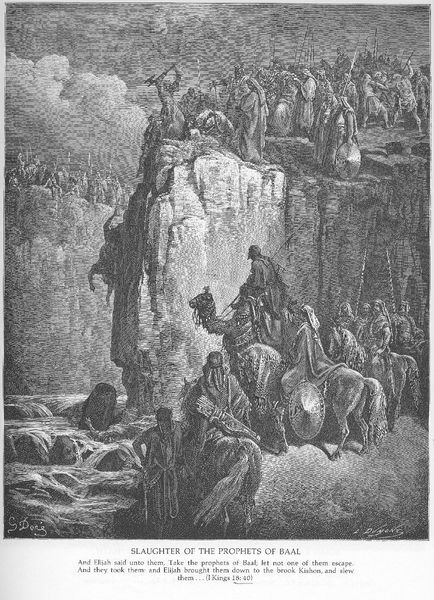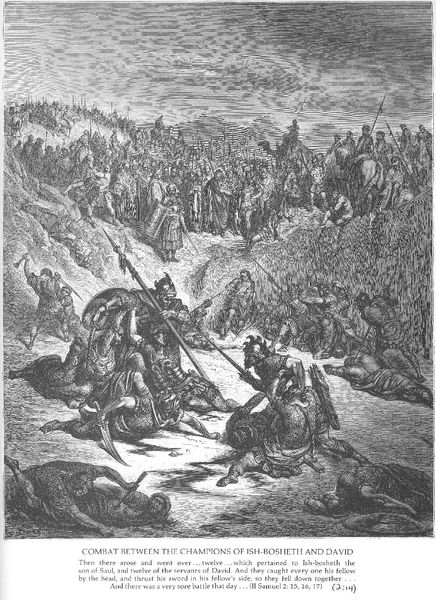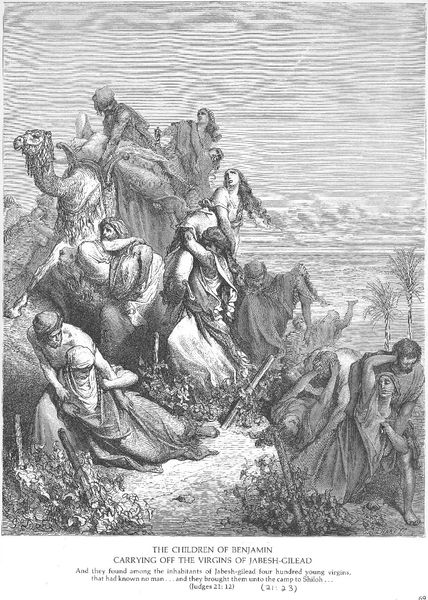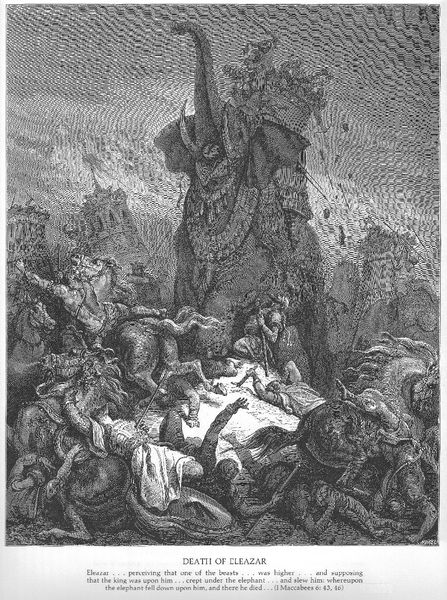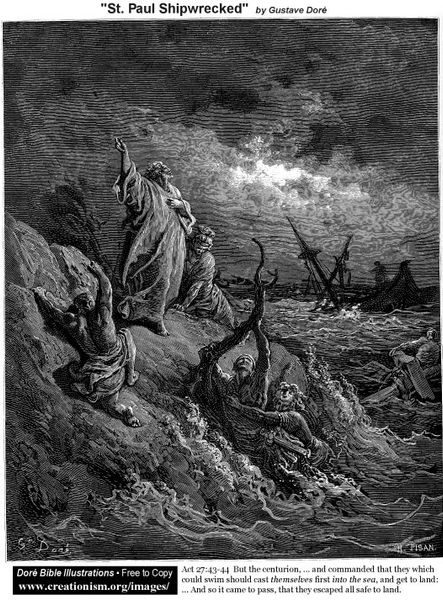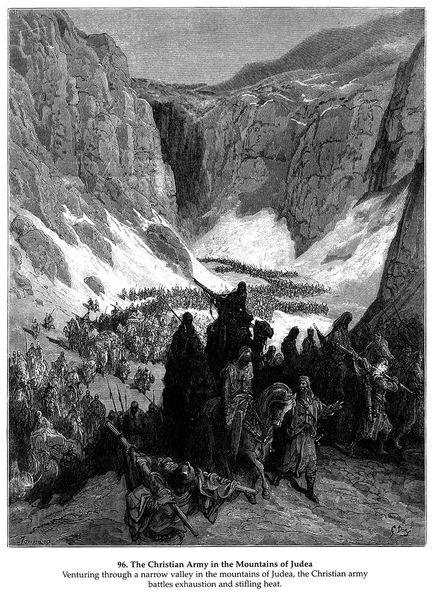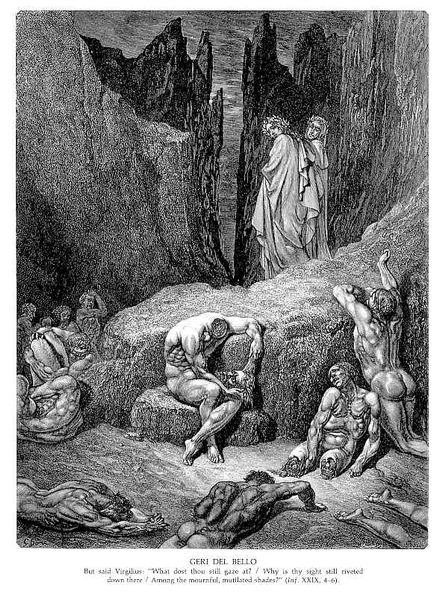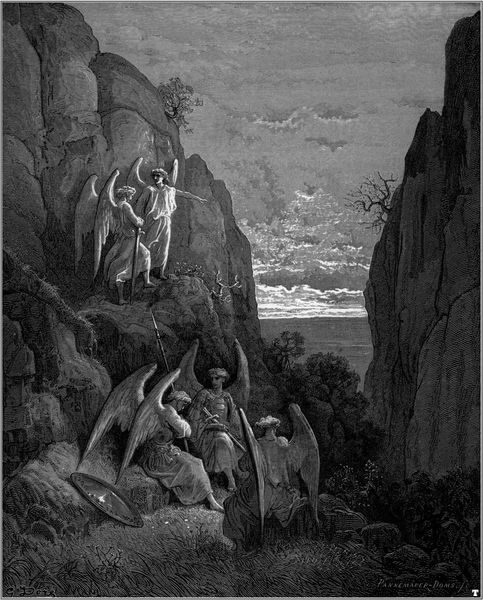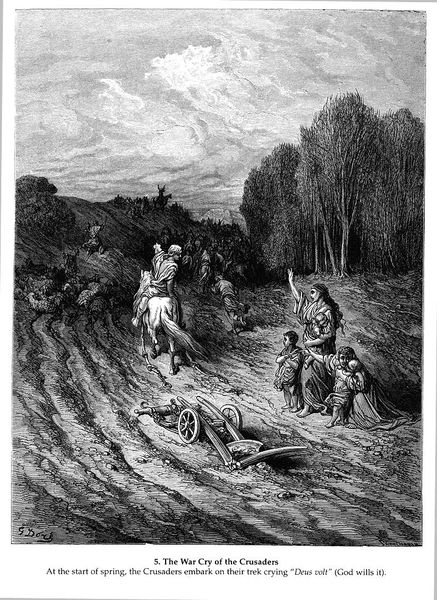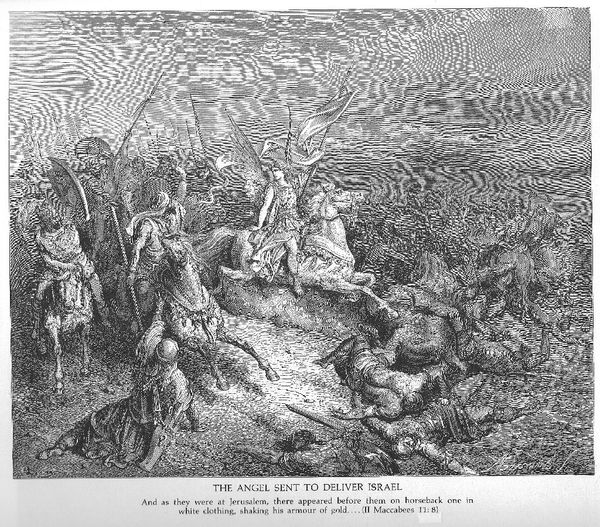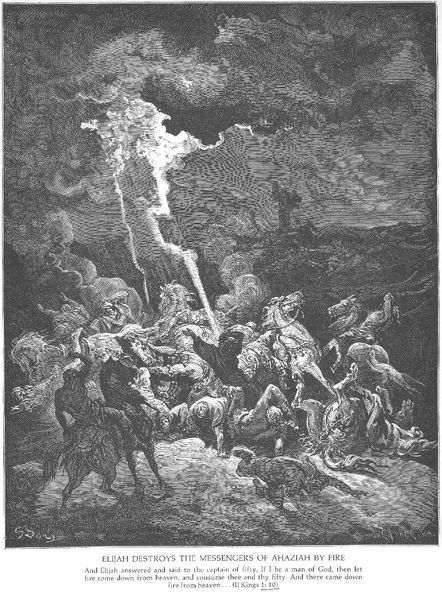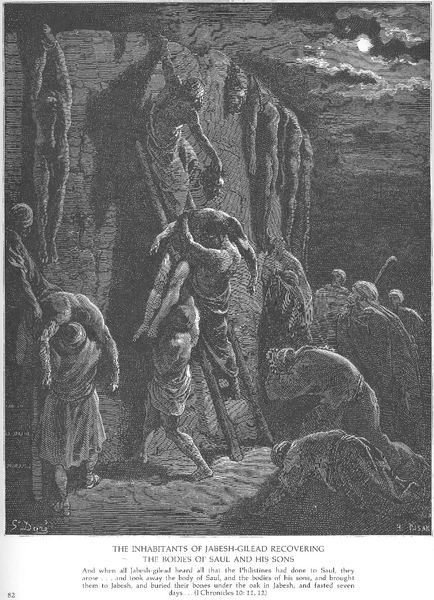
drawing, photography, ink, pen
#
drawing
#
allegory
#
narrative-art
#
pen illustration
#
war
#
landscape
#
fantasy-art
#
figuration
#
photography
#
ink
#
romanticism
#
line
#
pen
Copyright: Public domain
Curator: Let's discuss Gustave Doré’s "Don Quixote." What’s your immediate take? Editor: My first thought? Nightmare fuel. Seriously, this is oppressive. That landscape looms like internalized trauma, and all these beastly creatures—they feel like manifestations of societal ills. It is terrifying, actually! Curator: Yes, the density of line and tone certainly evokes an unsettling atmosphere. Notice how Doré masterfully employs chiaroscuro, building volume through contrasting light and shadow? Look at how the precise, almost frantic, hatching creates depth, lending palpable form to both Don Quixote and the grotesque forms swarming below. Editor: Exactly. And for me, the grotesque isn't just a visual effect. It is historically coded! The artist invites us to question, you know? Who are these "monsters"? Are they simply monstrous or stand-ins for groups marginalized and demonized across history? Perhaps they symbolize colonial subjects? Curator: One could read it that way. Alternatively, consider how Doré employs line. Note how lines converge and diverge, creating intricate patterns of light and dark that establish a rhythmic complexity throughout the entire composition. Focus on the ways the landscape interacts with the human figures through visual contrast, pushing us to contemplate narrative! Editor: I see your point, I really do. But for whom is this a narrative? What ideology does that structure endorse or critique? I mean, consider that Doré made a career visualizing European literary canons. How does he confront issues of power and perspective through this very act? Curator: Power is undeniably present, structuring not only the imagery but our viewing experience. We are invited, through compositional devices like rising perspective and strategic lighting, to align ourselves with the knight figure atop that imposing crag and contemplate the abyssal world beneath. Editor: Precisely. That elevated, "heroic" vantage normalizes the knight’s quest for dominance over the monstrous, which makes me reflect critically about who that serves. Ultimately, artworks, and visual analysis more generally, invite conversations, contestation, and critical self-awareness. Curator: Indeed, what might appear as a simple illustration can spark such intricate conversations regarding structure, composition, and, equally importantly, social context.
Comments
No comments
Be the first to comment and join the conversation on the ultimate creative platform.

